Using aeration holes is standard practice for healthy lawns. But how far apart should the holes be? Well, the answer can vary due to several factors. We researched and laid out these answers in this article.
Aeration holes need to be between 2 to 6 inches apart. In most cases, it is optimal to have 3 inches between 3-inch deep aeration holes. Well-aerated lawns will have 20 to 40 holes per square foot. But it is best to distance aeration holes depending on your lawn's features.
So, when and how exactly should you tweak the distance between aeration holes on your lawn? We provide insights into this question in the next section. Please keep reading to find out.
How Close Should Aeration Holes Be?
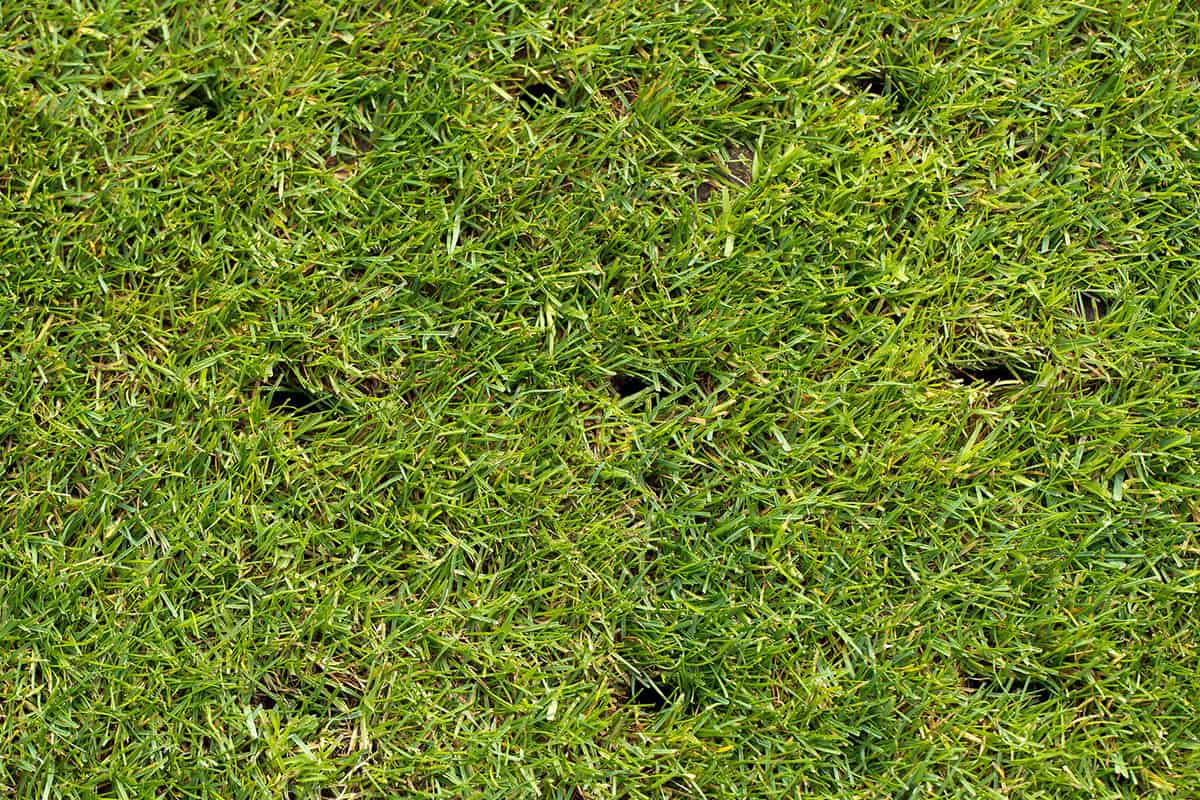
Proper aeration allows the grassroots to have a good flow of water and nutrients, letting your grass flourish. And these aeration holes should be evenly distributed across your lawn.
Since you must have between 20 to 40 aeration holes per square foot, you can compute how far each hole must be from the other based on the size of your lawn. You can control the distance between aeration holes by using an appropriate aerator.
Aside from lawn size, three factors will affect your aeration process. These are:
- Traffic
- Thatch
- Soil Type
Lawn Traffic
Traffic refers to anything that goes over the lawn regularly. This includes people, animals or pets, and vehicles.
Soil compaction refers to how lawn soil gets pressed down. Different activities result in different soil compaction.
Pay attention to how much compaction your lawn is susceptible to establish good aeration practices. Poorly compacted soil is unable to drain and lacks proper airflow. As a result, lawns with higher and heavier traffic need to be aerated more often, with closer distances between each hole.
Thatch
Thatch is the organic waste matter that accumulates over your lawn. Over time, they can form a layer on your lawn, contributing to poor aeration. To alleviate the issue, you can aerate if there is an abundance of thatch. But if it is too much, then you will have to dethatch.
You can use a dethatching rake to dethatch the lawn. It's advisable to do this before you aerate your lawn during preparation. You can also do this independent of aeration as part of your regular lawn maintenance.
Click here to see Manual Dethatching Core Aerator on Amazon.
Soil Type
Some soils compact more easily than others. Sandy loam soils have the best drainage, though they compact sufficiently. Therefore, they need to be aerated less often, with more distance between aeration holes.
Typically, you only need to aerate your lawn once a year. And if there is not much traffic or thatch over a lawn with sandy soil, you may not have to aerate!
In contrast, clay soils compact poorly. This soil type requires aeration multiple times yearly with smaller distances between the holes. Avoid too much traffic on these lawns, so you do not have to aerate as much. Also, dethatch clay soil lawns regularly.
How Deep Should You Plug Aerate?
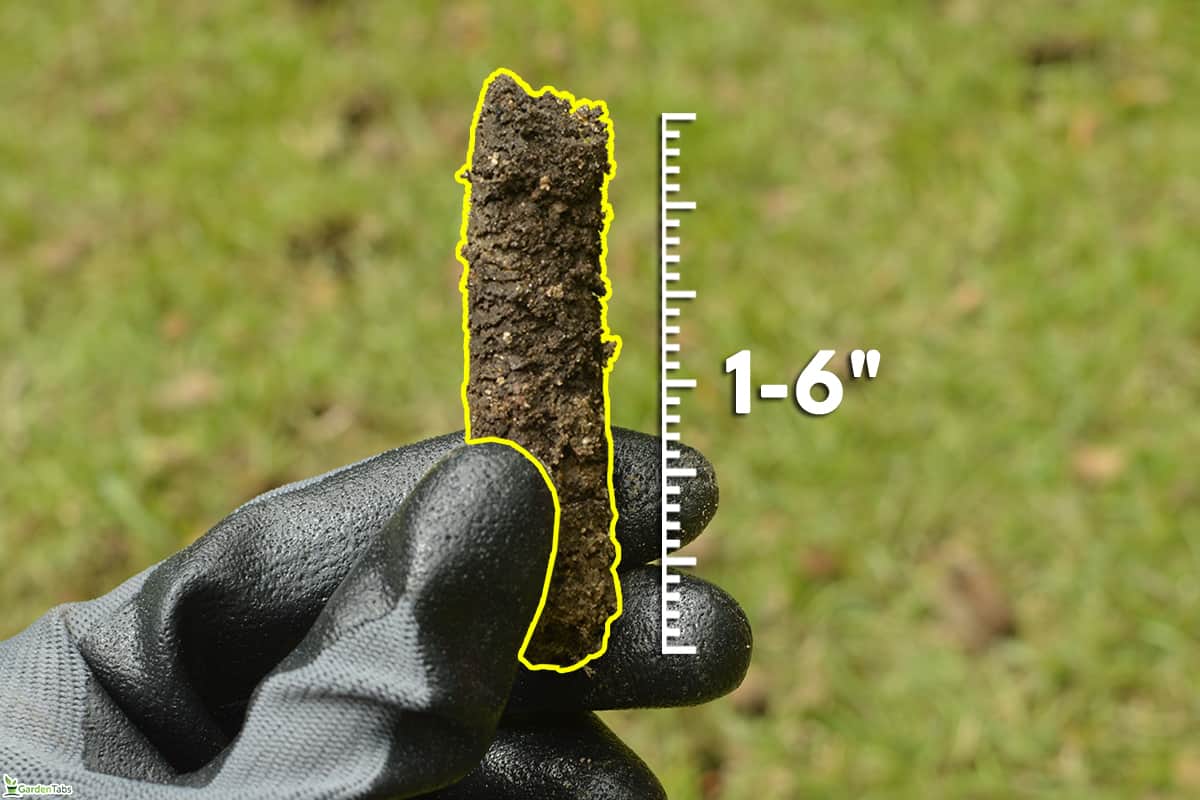
When your lawn starts growing rapidly, you may want to plug aerate. This is the process of removing a plug of grass from your lawn. Grass plugs are tray-grown turf plants where the grass in your lawn originates.
The standard depth of plug aeration is 1 to 6 inches deep. You must have the appropriate tool to pull out the plugs successfully. Pulling cores or plugs is the most effective way to aerate lawns and reduce compaction.
When it comes to plugs, you may consider spiking them instead. This is the opposite of pulling plugs, as spiking pushes into the soil to create aeration holes. While this practice can result in even holes, it also contributes to compaction.
The average plug has a diameter between 1/2 and 3/4 inches. You can pull them out efficiently and evenly across your lawn using a plug aerator.
Successful plug aeration relieves soil tension and is the best solution for severe compaction.
Plug aeration is sometimes referred to as core aeration. Core aerators have hollow tines. This enables the soil to go out the other end rather than just being spiked into the ground. You can choose a machine with tines big enough to handle the width of the plugs in your lawn.
What Happens If You Aerate Too Much?
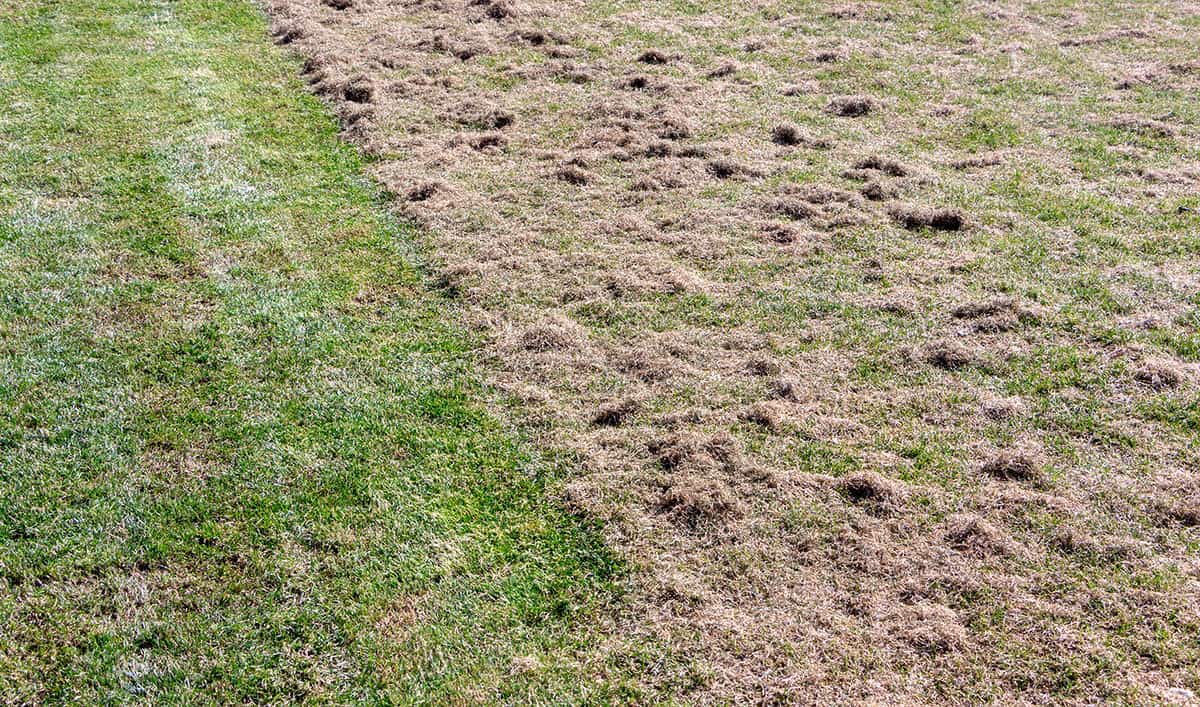
As much as aerating your lawn is beneficial, you must not aerate too much. Possible risks of over-aeration include root damage and the disruption of healthy growth. Worse, the grass may die.
Unless you have particularly compacted soil, avoid aerating more than once a year. In most cases, you can go without aerating for longer.
It is suitable to aerate compacted or clay soil lawns once a year. As for less compact or sandy soils, aerate at least every two years. It is also helpful to dethatch when necessary.
Does An Aerator Increase pH?
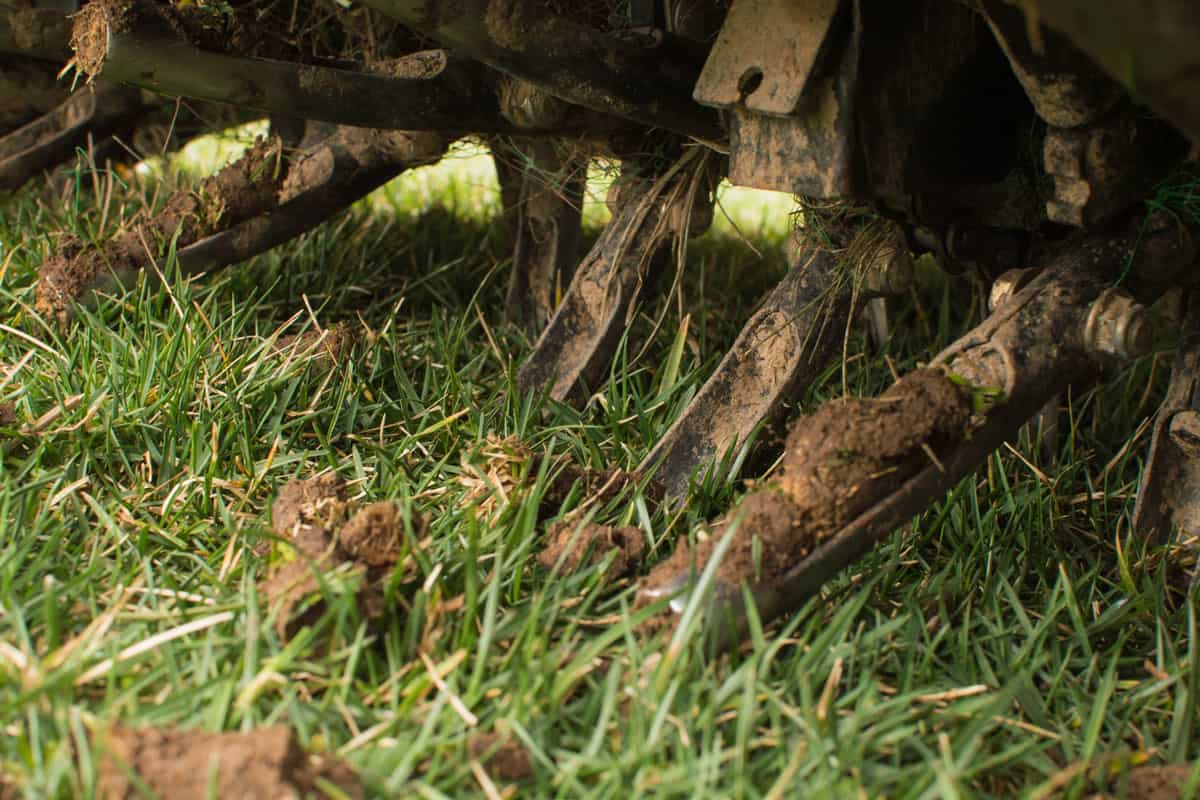
Some grasses are fussy when it comes to pH levels. Aerating can cause a rise in pH if you do it too much. Introducing air to wet soil and exposing it to turbulence can result in outgassing CO2.
Rather than raising the pH with additional products, yearly aeration can be enough to maintain adequate pH levels. However, over-aeration will continue to promote the rise in pH levels, becoming a possible detriment.
It takes a long time to raise the pH levels of the soil via aeration. Adding compounds may be a quicker option. Examples of these are lime-based products, baking soda, and eggshells.
How To Properly Aerate Your Lawn
Successful aeration all comes down to the techinque. To properly aerate your lawn, you have to get the conditions right. Even though you can use most aerators for this job, a manual core aerator is best.
Look out for the signs that imply you need to aerate your lawn. They include poor draining, withering grass, hard soil, and brown patches.
As for scheduled aeration, do it at peak growth, not when the lawn is dormant. It is prudent to familiarize yourself with your lawn's growth pattern since this can happen at any time of year.
Since you will be doing so at peak growth, you must mow the lawn first. The cuttings will help protect and even nourish the soil after aeration. Wet your lawn or moisten the soil. Then, aerate.
Once aerated, you can fertilize your lawn. Make sure to water it as well. When the plugs dry, you can break them apart to clean your lawn's appearance.
As for empty lawns, you can sprinkle seeds (as well as fertilize) after aeration. In this case, water until it starts puddling slightly. Do this twice daily until you begin to see germination.
How Many Passes To Make With Aerator
Two passes are enough when using an aerator. This way, you can cover the entire lawn with 20 to 40 aeration holes per square foot. You will also need to check the specification of your machine. The lesser and more widely spaced the tines, the more time it will take for you to aerate a lawn.
You can make up to four passes if you have to, especially for lawns you are about to plant. This gives you enough looseness to the soil and enough holes to sprinkle seeds in.
The first pass has to go in the direction of your initial mowing. The other passes you make should be at an angle. If you keep making passes in the same direction or parallel to the mowing pattern, you will not have enough holes.
How Long Does It Take To Aerate A Lawn
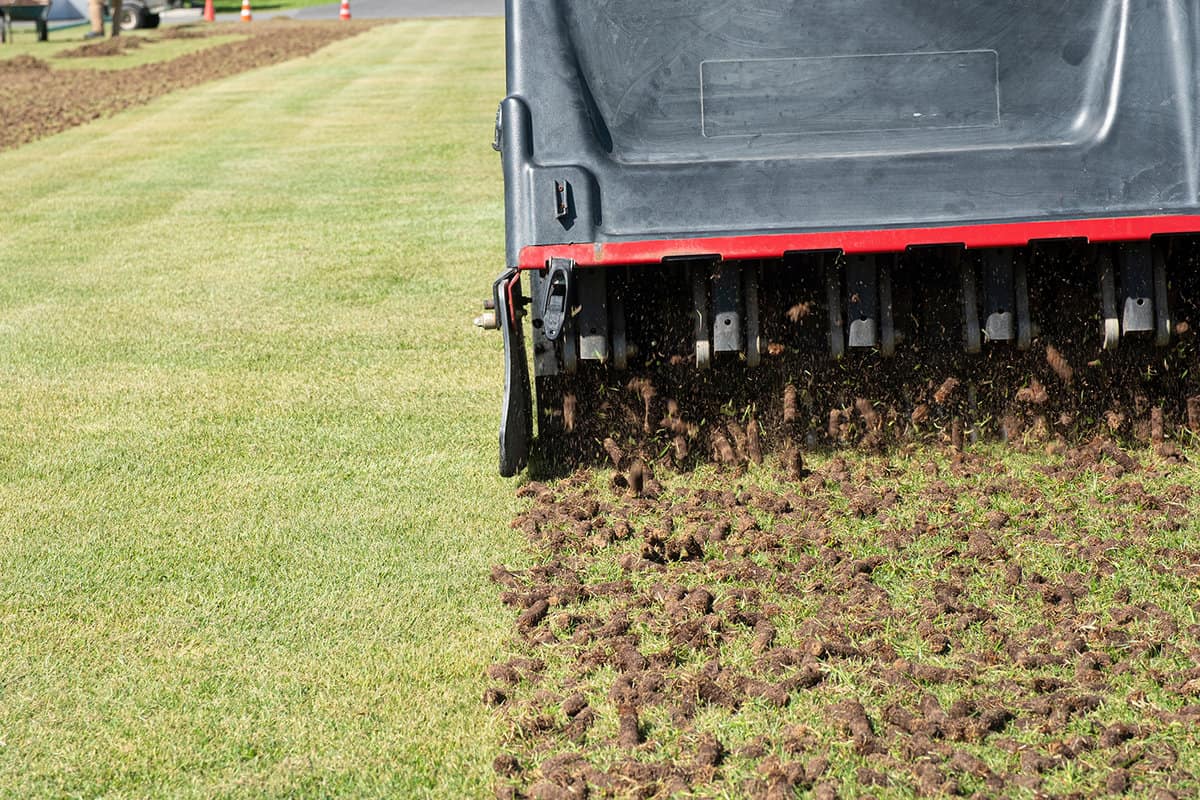
Work speed, lawn size, and aerator type will affect how long you will take to aerate a lawn. If you are using a rolling aerator, you should be able to aerate an average lawn within 30 minutes. Some aerators can even get the job done in 15 minutes!
Heavy-duty aerators are best for large swaths of land. Others are smaller and better for more suburban lawns. You can even get hand-held aerators or one you strap onto your shoes.
Click here to see Lawn Aerator Shoes on Amazon.
Wrapping Things Up
Aeration holes must be close enough to allow proper air and water movement. However, they must not be too close together to avoid damage. Most aerators have evenly-spaced tines that help you achieve adequate aeration within just two passes.
Your lawn needs regular aeration to promote healthy grass growth as it solves issues with compaction and dying grass. It is best to do this before planting a new lawn and at least once a year after the grass grows. That said, avoid overaerating.
Did you find this post helpful? If you did, check out our other articles before you go!


